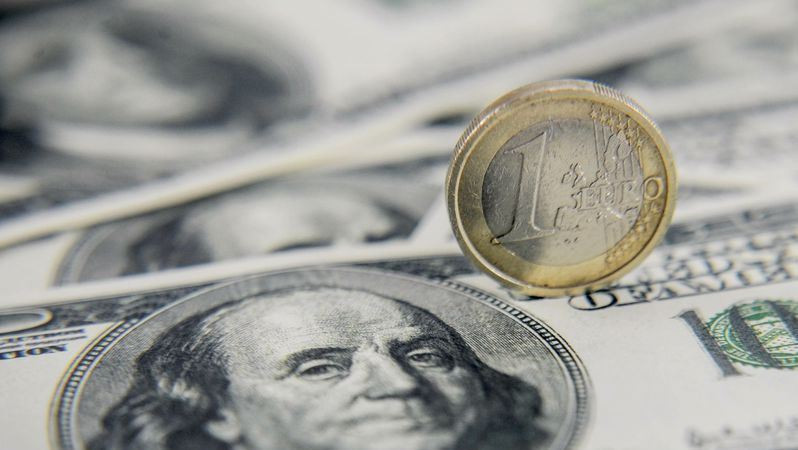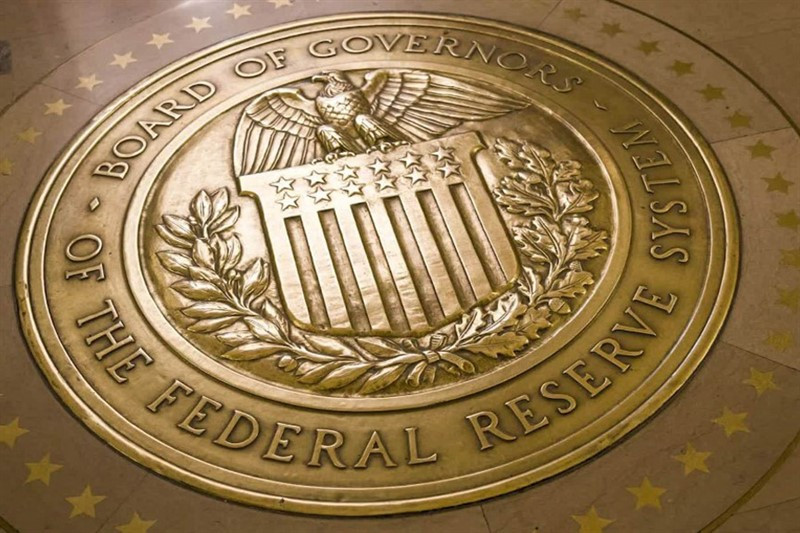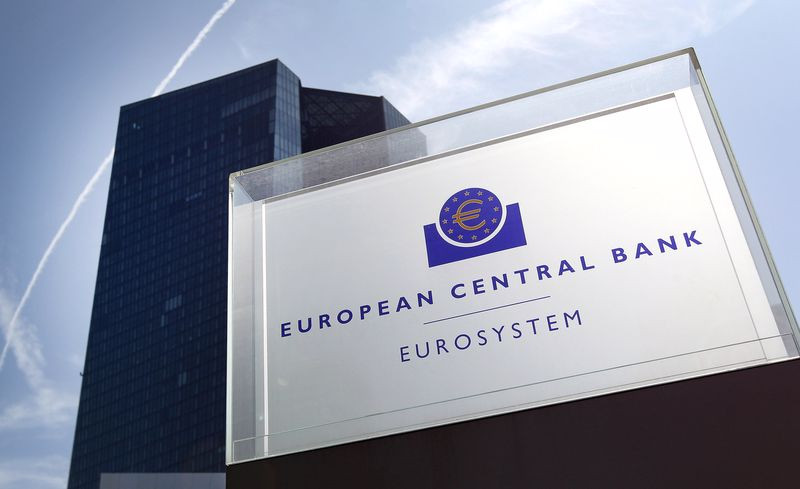
The Fed did not beat around the bush on Wednesday and made it clear that turbulent inflation is a risk, along with the new COVID-19 "Omicron" variant spreading rapidly around the world.
In its new forecasts and statement from its December meeting, the US Central Bank is becoming increasingly persistent in its emphasis on policy normalization after nearly two years of efforts to help the national economy cope with the pandemic consequences.
Meanwhile, COVID-19 continues to spread around the world, and its omicron strain raises uncertainty.
According to Jerome Powell, head of the Federal Reserve, it is not yet clear what impact Omicron will have on inflation, economic growth, or employment, but people are learning to live with wave upon wave more and more.
Obviously, it will be a while before the Fed officials understand what state the US labor market will have after the pandemic is curbed.
Jerome Powell stated that it was unlikely to happen in the foreseeable future.
"What we need is another long expansion. That's what it would really take to get back to the kind of labor market we'd like to see. And to have that happen, we need to make sure that we maintain price stability," Powell said.
The fact that the Fed is determined to fight inflation as evidenced by its plans to accelerate the tapering of the QE program. In November, the Fed began reducing the number of redeemable assets from $15 billion a month, and in December it increased this amount to $30 billion. Given that the current volume of bond purchases is $90 billion, there is a possibility that the Fed will complete the rollback in March.
The regulator said it will adjust the pace of asset purchases based on the economic outlook.
It also raised its inflation estimates for 2021 and 2022 and lowered its forecast for unemployment next year.
The Fed's updated economic forecasts from its two-day meeting suggest that consumer price growth next year will be 2.6%, up from an earlier expectation of 2.2%, and that unemployment will fall to 3.5%, completely matching, if not exceeding the full employment rate.
Robust employment growth and increased price pressures have allowed Federal Reserve officials to consider raising interest rates soon. FOMC members now expect at least three rounds of borrowing cost increases next year. Back in September, about half of them believed that raising rates before 2023 would not be reasonable.
The Fed's rate forecasts are not a plan; the process will be determined by incoming statistical data, according to Powell. At the same time, he does not think that the interval between the end of asset purchases and rate hikes will be long.
The futures market sees about a 90% chance of a federal funds rate hike in April 2022 and a 100% chance in May. The odds of a rate hike in March are estimated at 50%.
The prospect of a rate hike should have led to a rise in the greenback and a fall in the US stock market. Instead, stocks strengthened, and the dollar rather quickly lost all the gains made after the announcement of the December FOMC meeting results.
The fact is that the Bank of America's shock scenario, according to which the Fed could suddenly raise rates at the next meeting, did not come true, and the markets relieved tension.
The situation is likely to change when the regulator raises rates. But all this will not happen soon, and the increase in rates will be gradual.
"Nobody's talking about dramatically tightening things up. And so this should still be a good environment for risk-taking by investors," Nuveen specialists said.
Still, investors said the Fed seemed to be succeeding in avoiding panic, in contrast to 2013, when bond yields rocketed during the so-called "taper tantrum".
The day before, the yields on ten-year Treasuries rose moderately, and today they have declined.

The scenario proposed by the Fed is essentially a soft landing. The central bank has acknowledged that price growth may exceed the 2% target for some time but predicts that inflation will gradually slow down in the coming years and that unemployment in the growing economy will remain low.
As an initial reaction, the USD index renewed three-week peaks, rising above 96.80, after the results of the Fed's two-day meeting were announced.
However, during Jerome Powell's press conference, stocks managed to go green, while the greenback turned down.
"The economy no longer needs increasing amounts of policy support," Fed's chair said, contrasting near-depression conditions at the start of the coronavirus pandemic in 2020 with today's rising prices and wages and a rapidly improving labor market.
J. Powell so charged the markets with optimism that the major Wall Street indices bounced back from their recent losses and returned to the upside, even as the US Central Bank was willing to raise interest rates as needed to control inflation.
Meanwhile, the greenback failed to maintain its gains and made a reversal near the 16-month high reached in November.
With markets assessing the prospect of more rapid policy tightening, dollar bulls quickly took profits. This, along with risk momentum, undermined the status of the USD as a safe haven currency and helped the EUR/USD pair attract some buyers at lower levels.
The day before the pair fell to a new monthly low reacting to the Fed's hawkish comments, before beginning recovery of about 80 pips from the 1.1220 area.
As a result of yesterday's trading, the euro appreciated against the US dollar by almost 0.30%, to 1.1290.
The divergence of the Fed and ECB policies served as a headwind for the single currency and limited the bulls' gains on EUR/USD.

On Thursday, traders' attention shifted to the ECB meeting, while the major currency pair was hovering below 1.1300 waiting for the regulator's decision on the monetary policy.
The USD index is consolidating its recent losses today, trading near 96.00.
"To some extent, the reaction to the Fed might have to wait for what the ECB does, because we're expecting the contrast between the ECB's disposition and the Fed's will be laid bare later tonight and that could probably be a catalyst for the U.S. dollar," National Australia Bank strategists said.
"Rarely has the backdrop for a major ECB decision been as uncomfortable and as uncertain as it is now," Berenberg specialists noted.
"The sharp rise in infections and inflation and the emergence of the new Omicron variant has complicated the picture to an extent that the Governing Council may need more time to decide on all the details of adjusting its non-conventional policy tool," Natixis experts commented.
The European Central Bank is likely to cut stimulus by another notch on Thursday, promising to continue supporting the financial system next year, sticking to its long-held view that alarmingly high inflation will decline on its own.
As the eurozone economy has returned to its pre-pandemic levels, there is increasing pressure on the ECB to follow the example of its counterparts and taper its stimulus programs.
However, ECB members fear that a too rapid retreat from current policies could undo years of work to revive weak inflation.

The regulator's dilemma is further complicated by an unusually uncertain outlook that could force policymakers to postpone many of their important decisions until the new year, leaving policy extremely flexible with limited commitments.
The compromise is likely to be clarity on the ECB's policy framework in 2022. That said, future policy details will be outlined as policymakers gain confidence that inflation, which is currently more than twice the bank's 2% target, will fall quickly in 2022.
What seems certain is that the €1.85 trillion in bond purchases under the Pandemic Emergency Purchase Program (PEPP) will be cut next quarter and then wind down. However, the long-term Asset Purchase Program (APP) will be expanded, making up for some of the lost stimuli.
Nevertheless, the total volume of purchases may remain at about €40 billion per month, which is less than half of the current purchases.
Effective stimulus cuts could be much smaller, although new government debt issuance is expected to decline, so the ECB will continue to absorb most of the new debt.
The regulator is also likely to make it clear that it will continue to buy bonds throughout the year in an effort to control yields and eliminate any rate hikes in 2022.
If the ECB remains cautious and maintains its focus on monetary stimulus, continues to state that inflation is temporary, and focuses on the economic consequences of the Omicron outbreak, the euro may hit 18-month lows against the US dollar.
If the regulator joins the other major central banks in their fight against inflation, the EUR/USD pair may rally as traders close their short positions.
However, this scenario still looks unlikely, as the ECB is expected to be one of the last to tighten its policy.

The Fed signals that it will stop pandemic bond purchases in March and raise rates three times next year make things difficult for the EUR/USD bulls, as the world's two largest central banks are conducting opposite policies.
Westpac experts believe that the sharp contrast of the Fed's hawkish policy with other more cautious central banks will provide strong support for the US dollar. They expect that in the first quarter of 2022 the USD index may rise significantly.
"DXY is likely to encounter some turbulence into year's end – the hawkish FOMC was largely priced in, positioning is heavily lopsided into year's end and Q4 GDP expectations under pressure. But the underlying uptrend remains soundly intact. DXY has yet to fully reflect the lift in yield support. The Fed is streets ahead of the ECB too," they noted.
"DXY slippage unlikely to extend much past 95.50, the uptrend likely to resume in the new year, new highs on the cards beyond 97 in Q1 2022," the experts concluded.
The euro is among the weaker currencies of 2021, and that is unlikely to change in 2022. The ECB remains committed to containing expectations of a rate hike while the eurozone suffers from a major outbreak of Omicron, and rising energy prices are reducing real income for Europeans, Westpac strategists said.
"EUR/USD is likely to struggle to post gains above 1.1350 near-term with 1.1500 acting as a more notable hurdle should USD falter. Risks of a slide towards 1.10 appear more likely," the experts added.





















